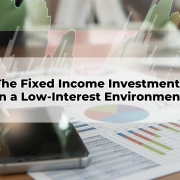Impact of Superannuation Contributions on Your Investment Strategy
Table of Contents
ToggleSuperannuation is a cornerstone of retirement planning in Australia, yet its influence on investment strategy is often underappreciated. By aligning super contributions with a broader financial plan, Australians can maximise returns while enhancing their security in retirement. Superannuation stands apart from other investment vehicles due to its unique tax benefits and legislated purpose, primarily aimed at funding retirement. As individuals approach retirement age, the way they interact with their super fund becomes increasingly strategic, encompassing aspects like contribution timing, asset allocation, and compliance with superannuation laws. Thoughtful super contributions, when synchronised with a solid investment strategy, become a dynamic tool for securing one’s financial future.
Why Superannuation Contributions Matter in Investment Planning
Super contributions, structured effectively, elevate an individual’s ability to build wealth while mitigating tax liabilities. These contributions differ significantly from other investment mechanisms because they’re sheltered within the superannuation environment, providing unique long-term compounding advantages. Whether through regular employer contributions or strategic personal input, every super contribution can shift the needle on financial outcomes for retirement. Integrating super contributions into a financial plan thus provides a balanced approach to accumulating wealth, fortifying the future against market volatility, inflation, and unforeseen economic events.
Types of Superannuation Contributions
Concessional Contributions
Concessional contributions are pre-tax contributions, often facilitated by employers or structured through salary sacrifice arrangements. These contributions hold significant tax advantages, reducing an individual’s assessable income while growing their retirement savings. Taxed at a concessional rate, these contributions serve as a tax-efficient method to enhance retirement funds. Many choose to add to their concessional contributions to boost retirement savings, either through salary sacrifice or by making deductible personal contributions.
Non-Concessional Contributions
Non-concessional contributions, funded from after-tax income, expand an individual’s superannuation balance without tax on entry, providing further tax-free earnings within the fund. These contributions are ideal for those with surplus cash flow or seeking additional retirement savings beyond the concessional cap. Since they aren’t taxed on entry, these contributions ultimately serve as a reservoir for tax-free income in retirement, especially advantageous to those approaching the retirement phase seeking to maximise their super balance.
Understanding Tax Advantages of Superannuation Contributions
Super contributions benefit from a favourable tax structure. Concessional contributions, taxed at 15%, significantly reduce the tax burden compared to the higher marginal tax rates outside super. This structure provides a profound advantage, particularly for individuals in higher tax brackets, who can thus deploy funds more efficiently toward retirement. Additionally, earnings within super funds are taxed at a lower rate than most non-super investments, maximising the compounding effect over the long term. This dual tax advantage becomes instrumental in shaping robust retirement savings without the erosion typical of taxable investment structures.
The Role of Superannuation in Retirement Financial Advice
For a “Toowoomba Financial Adviser,” superannuation contributions represent a pillar of retirement advice, particularly in Queensland’s retirement-focused demographic. Superannuation delivers flexibility and tax efficiency, allowing advisers to recommend tailored strategies that align with clients’ unique retirement objectives. Whether it’s maintaining sufficient liquidity or balancing growth and stability, the adviser’s role is to position superannuation as a dynamic vehicle within a holistic retirement strategy. Effective retirement advice transforms superannuation into a highly adaptable tool, enabling retirees to meet their income needs while managing longevity risk.
How Super Contributions Can Optimise Your Retirement Savings
Regular super contributions amplify the compounding effect, creating a formidable retirement nest egg over time. This consistent growth is especially beneficial when contributions commence early, allowing small, regular contributions to accumulate into substantial wealth by retirement age. Even when starting later in life, disciplined super contributions significantly augment retirement savings, providing a reliable income stream to offset expenses in retirement. The act of optimising super contributions, both in terms of timing and amount, plays a crucial role in determining the quality of retirement an individual can expect.
Superannuation Contribution Limits and Compliance
Annual Contribution Caps
Australia’s super system sets annual caps on both concessional and non-concessional contributions to prevent tax avoidance and ensure fair access to tax benefits. The concessional cap limits pre-tax contributions, while the non-concessional cap regulates after-tax inputs. Adhering to these caps is essential to avoid penalty taxes, ensuring contributions benefit from the full extent of super’s tax concessions.
Implications of Exceeding Contribution Limits
Exceeding the contribution limits may trigger additional tax liabilities, potentially nullifying the tax benefits of superannuation. An awareness of these limits allows for strategic planning, especially for high-net-worth individuals or those nearing retirement. Effective management of contribution caps not only maximises the tax efficacy of super but also prevents the financial implications of excessive contributions.
Benefits of Early and Regular Contributions to Superannuation
Early super contributions establish a foundation of compounding returns, creating exponential growth over time. Regular contributions mitigate the risks associated with market volatility by leveraging dollar-cost averaging, a strategy that smooths out the price paid for investments over time. Early engagement with super also instills a disciplined saving habit, which, alongside the tax advantages of super, allows for retirement preparation that’s proactive rather than reactive, leading to a financially secure future.
Investment Options Within Superannuation Funds
Managed Funds and Balanced Portfolios
Many super funds offer managed portfolios, which automatically balance growth assets like shares with defensive assets such as bonds. These balanced portfolios are designed to cater to different risk appetites, making them a suitable choice for individuals looking for diversified exposure within superannuation. Managed options ease the decision-making process for those who prefer a hands-off approach to super management, providing professionally curated asset mixes that align with various life stages.
Direct Investment Choices
For more sophisticated investors, self-managed super funds (SMSFs) offer the freedom to invest directly in assets such as shares, property, or even alternative investments. These direct choices enable investors to tailor their portfolios according to personal investment goals and risk tolerance. While direct investment requires thorough knowledge and compliance management, it empowers individuals to construct a superannuation strategy that mirrors their unique financial aspirations.
Super Contributions and Risk Management in an Investment Strategy
Super contributions provide a cushion against market risks, enabling retirement savers to balance high-return and defensive investments. Through strategic asset allocation within super, individuals can adjust their risk exposure according to market conditions, age, and retirement goals. Super’s tax-efficient structure further mitigates risk by fostering long-term investment without significant tax erosion, an advantage that extends to pre-retirees managing longevity risk.
Using Salary Sacrifice and Personal Contributions to Boost Super
Salary sacrifice arrangements allow employees to channel a portion of their pre-tax income into super, reducing taxable income while building retirement savings. This approach not only increases an individual’s super balance but also provides a means to accumulate wealth tax-efficiently. Personal contributions, which may be tax-deductible, supplement the benefits of salary sacrifice, creating a balanced and comprehensive approach to building retirement capital.
The Potential of Government Co-Contributions and Spouse Contributions
Government co-contributions encourage low to middle-income earners to save for retirement by matching personal contributions up to a specified limit. Additionally, spouse contributions provide a tax offset, supporting households in maximising their combined super savings. Both mechanisms strengthen the retirement savings of those who might otherwise lack sufficient super, fortifying financial security for both primary and secondary earners.
Impact of Super Contributions on Age Pension Eligibility
Superannuation can influence eligibility for the Age Pension, with account-based pensions treated as income under the assets test. Strategic planning around super withdrawals and account balances can impact pension benefits, enabling retirees to maintain a higher standard of living. As individuals enter retirement, understanding the interaction between superannuation and the Age Pension becomes critical, especially for those whose retirement relies on a blend of public and personal funds.
The Role of an Online Financial Adviser in Managing Super Contributions
An online financial adviser offers accessible expertise, guiding clients on optimal super contributions and compliance with ever-evolving regulations. Through online consultations, advisers can assist clients in understanding their super options and making well-informed decisions from the comfort of their home. This service caters especially to individuals with complex super arrangements or those looking to maximise retirement savings without in-person consultations, expanding access to expert advice across Australia.
Conclusion
Superannuation contributions are more than a mere retirement vehicle—they’re a sophisticated component of a broader investment strategy. By understanding the tax advantages, risk management capabilities, and government incentives associated with super, Australians can create a stable, growth-oriented foundation for their future. Advisers play a crucial role in helping individuals align superannuation with personal goals, reinforcing the connection between today’s contributions and tomorrow’s financial independence.









